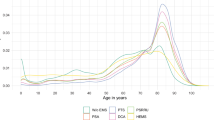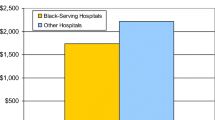Abstract
Background
Although the impact of a neurointensivist (NI) on patient outcomes has been examined in the past, the financial impact has not been estimated before.
Methods
We extracted the financial data from the Neuro-Intensive Care Unit (NICU) at Henry Ford Hospital during two 3-year periods, one before and one after the appointment of a NI. Net revenue (NR), total direct expenses (TDE), and contribution margin (CM) were compared between these two periods both for Henry Ford Hospital and the Henry Ford Medical Group.
Results
The average number of admissions increased by 24% during the period when the NI was present, the number of patient-days by 25% and the average length of stay by 2%. In the second period, when the NI was billing for critical care time spent in the NICU, as well as for procedures he performed, the mean yearly NR was $402,000, the TDE $317,000 and the NR/TDE 1.24 (>1.0 represents profitability). The combined mean NR (Henry Ford Hospital + Medical Group) increased by 54.6%, the combined TDE by 42.2% and the combined CM by 91.2% in the period when the NI was present. This is reflected in the combined mean CM per admission, which also increased by 56.4% in the after period.
Conclusion
This study shows a significant financial benefit for the Henry Ford Health System during the period when a NI was present in the NICU.
Similar content being viewed by others
References
Varelas PN, Conti MM, Spanaki MV, et al. The impact of a neurointensivist-led team on a semiclosed neurosciences intensive care unit. Crit Care Med. 2004;32:2191–8.
Suarez JI, Zaidat OO, Suri MF, et al. Length of stay and mortality in neurocritically ill patients: impact of a specialized neurocritical care team. Crit Care Med. 2004;32:2311–7.
Varelas PN, Eastwood D, Yun HJ, et al. Impact of a neurointensivist on outcomes in patients with head trauma treated in a neurosciences intensive care unit. J Neurosurg. 2006;104:713–9.
Bershad EM, Feen ES, Hernandez OH, Suri MF, Suarez JI. Impact of a specialized neurointensive care team on outcomes of critically ill acute ischemic stroke patients. Neurocrit Care. 2008;9:287–92.
Varelas PN, Schultz L, Conti M, Spanaki M, Genarrelli T, Hacein-Bey L. The impact of a neuro-intensivist on patients with stroke admitted to a neurosciences intensive care unit. Neurocrit Care. 2008;9:293–9.
Pronovost PJ, Needham DM, Waters H, et al. Intensive care unit physician staffing: financial modeling of the Leapfrog standard. Crit Care Med. 2006;34:S18–24.
Pronovost PJ, Needham DM, Waters H, et al. Intensive care unit physician staffing: financial modeling of the Leapfrog standard. Crit Care Med. 2004;32:1247–53.
Pronovost PJ, Holzmueller CG, Clattenburg L, et al. Team care: beyond open and closed intensive care units. Curr Opin Crit Care. 2006;12:604–8.
Varelas PN, Spanaki MV, Hacein-Bey L. Documentation in medical records improves after a neurointensivist’s appointment. Neurocrit Care. 2005;3:234–6.
Vespa PM, Miller C, Hu X, Nenov V, Buxey F, Martin NA. Intensive care unit robotic telepresence facilitates rapid physician response to unstable patients and decreased cost in neurointensive care. Surg Neurol. 2007;67:331–7.
Beauregard CL, Friedman WA. Routine use of postoperative ICU care for elective craniotomy: a cost-benefit analysis. Surg Neurol. 2003;60:483–9. (discussion 489).
Mirski MA, Chang CW, Cowan R. Impact of a neuroscience intensive care unit on neurosurgical patient outcomes and cost of care: evidence-based support for an intensivist-directed specialty ICU model of care. J Neurosurg Anesthesiol. 2001;13:83–92.
Author information
Authors and Affiliations
Corresponding author
Rights and permissions
About this article
Cite this article
Varelas, P.N., Abdelhak, T., Wellwood, J. et al. The Appointment of Neurointensivists Is Financially Beneficial to the Employer. Neurocrit Care 13, 228–232 (2010). https://doi.org/10.1007/s12028-010-9371-0
Published:
Issue Date:
DOI: https://doi.org/10.1007/s12028-010-9371-0




